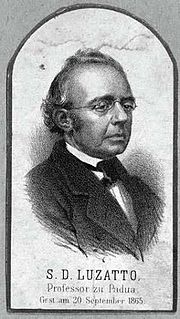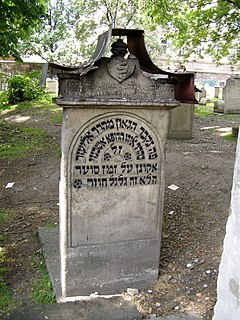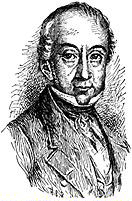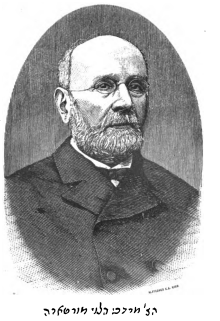Sforno is the name of a prominent Jewish Italian family, many members of which distinguished themselves as rabbis and scholars. The most prominent of these were the following:

Samuel David Luzzatto, also known by the Hebrew acronym Shadal (שד״ל), was an Italian Jewish scholar, poet, and a member of the Wissenschaft des Judentums movement.
Judah Moscato was an Italian rabbi, poet, and philosopher of the sixteenth century; born at Osimo, near Ancona; died at Mantua. As harassment of Jews in the Pontifical States worsened under Paul IV from 1555, Judah went to the home of his kinsman Minzi Beretaro at Mantua, where he enjoyed the society and instruction of the foremost Jews of his time, the brothers Moses, David, and Judah Provençal and Azariah dei Rossi. In 1587 he became chief rabbi of Mantua. Moscato was a true child of the Renaissance, well versed in the classical languages and literatures and in sympathy with their spirit. Like many of his contemporaries, he believed that the ancient civilization and all the languages of culture were derived from Judaism and that it was the duty of the Jews to acquire these branches of knowledge, of which they had once been masters. He was widely read, especially in philosophy; and again like his contemporaries, although an admirer of Judah ha-Levi and Maimonides, he was an enthusiastic student of the Cabala.

Eliezer (Lazer) ben Elijah Ashkenazi was a Talmudist, rabbi, physician, and many-sided scholar.
Abraham ben Judah ha-Levi Minz was an Italian rabbi who flourished at Padua in the first half of the 16th century. Minz studied chiefly under his father, Judah Minz, whom he succeeded as rabbi and head of the yeshiva of Padua. According to Gedaliah ibn Yahya ben Joseph, it was with Abraham Minz that Jacob Pollak had the quarrel which ended in their excommunicating each other; according to most other authorities, the quarrel was with Judah Minz. Ibn Yahya further says that the Italian rabbis believe that Polak and Abraham Minz died on the same day. Minz was the author of a number of decisions that were printed with those of R. Lewa of Ferrara. He was the author also of Seder Gittin ve-Chalitzah, a treatise on divorce and Chalitzah, printed with the responsa of his father and of his son-in-law Meir Katzenellenbogen.
Ezra ben Isaac Fano was Rabbi of Mantua and cabalist who lived in the 16th and 17th centuries. Fano was a pupil of the cabalist Israel Saruḳ, and among his own pupils were Menahem Azariah da Fano, Jacob the Levite, and Issachar Baer Eulenburg.

Isaac Samuel Reggio (YaShaR) was an Austro-Italian scholar and rabbi. He was born and died in Gorizia. Reggio studied Hebrew and rabbinics under his father, Abraham Vita, later rabbi of Gorizia, acquiring at the same time in the gymnasium a knowledge of secular science and languages. Reggio's father, one of the liberal rabbis who supported Hartwig Wessely, paid special attention to the religious instruction of his son, who displayed unusual aptitude in Hebrew, and at the age of fourteen wrote a metrical dirge on the death of Moses Ḥefeẓ, rabbi of Gorizia.
Joseph Shalit ben Eliezer Riqueti (Richetti) was a Jewish-Italian scholar born at Safed, and who lived in the second half of the 17th century at Verona, where he directed a Talmudical school. He was the author of Ḥokmat ha-Mishkan or Iggeret Meleket ha-Mishkan, on the construction of the First Temple. He also published a map of Palestine which Zunz supposes to have been prepared as one of the illustrations of a Passover Haggadah.
Isaac Chayyim Cantarini, also known as Isaacus Viva, was an Italian poet, writer, physician, rabbi and preacher. He studied Hebrew and the Talmud with Solomon Marini, author of the Tiqqun 'Olam, and with the poet Moses Catalano. His instructor in secular subjects was Bernardo de Laurentius. He was the nephew of Judah ben Samuel ha-Kohen Cantarini, also a physician and rabbi of Padua.
Lelio Cantoni was an Italian rabbi. In 1829 he entered the Istituto Rabbinico at Padua, then recently established, graduating as a rabbi in 1832. From 1833 until his death he was chief rabbi of Turin. Endowed with executive ability and magnetic personality, and being a man of deep piety, he ably bridged the gulf that separated the old and the modern views of Judaism.
Immanuel Frances was an Italian Jewish poet and rabbinical scholar.

Samson Morpurgo ben Joshua Moses was an Italian rabbi, physician, and liturgist.
Moses Levi Ehrenreich was an Italian rabbi, who became chief rabbi at Rome.
Judah ben Jehiel,, more usually called Judah Messer Leon, was an Italian rabbi, teacher, physician, and philosopher. Through his works, assimilating and embodying the intellectual approach of the best Italian universities of the time, yet setting it inside the intellectual culture of Jewish tradition, he is seen as a quintessential example of a hakham kolel, a scholar who excelled in both secular and rabbinic studies, the Hebrew equivalent of a Renaissance man. This was the ideal he tried to instil in his students. One of his students was Yohanan Alemanno.

Abraham Cohen was a Jewish physician, rabbi, religious philosopher and poet on Zante (Zakynthos), an Ionian Island, and an overseas colony of the Venetian Republic.
Jacob Vita Pardo (Hebrew: יעקב חי פארדו) was an author and preacher. He was born at Ragusa in 1822 to David Samuel Pardo, and died in 1843 at Padua, where he studied at the Collegium Rabbinicum under Samuel David Luzzatto. His body was transported to Verona for burial. Five of his sermons, preached in Padua and Verona, were published after his death. When but eighteen years old he wrote a commentary on Micah, which was published by Luzzatto as the first supplement to Joseph Almanzi's "Abne Zikkaron," Prague, 1841. The commentary is not complete, extending only to chapter 4 verse 8. An obituary, written by Luzzatto in memory of his talented pupil, serves as an introduction to the work.
Benjamin Consolo was an Italian Hebrew writer and translator. Consolo was born in Ancona, where he studied at the Talmud Torah under the instruction of Rabbi David A. Vivant. He studied Italian with Count Pietro Alety, a student of Dante, and then Latin with Lorenzo Barili. He was appointed secretary of the Jewish community at Ancona, and later of that at Florence, where he began translating Hebrew works into Italian.
Moses Vita Ascarelli, also known by the pen name Emet le-Ya'akov, was an Italian physician, rabbi, writer, poet, and translator.
Samuel Vita della Volta, also known by the acronyms שמ״ח and שח״ם, was an Italian physician and Hebraist, who flourished in Mantua. He wrote a number of commentaries, sermons, and responsa, which remain in manuscript.
L'Educatore Israelita, known as Il Vessillo Israelitico after 1874, was one of the first Jewish newspapers in Italy. The monthly periodical was founded in 1853 by Giuseppe Levi.





